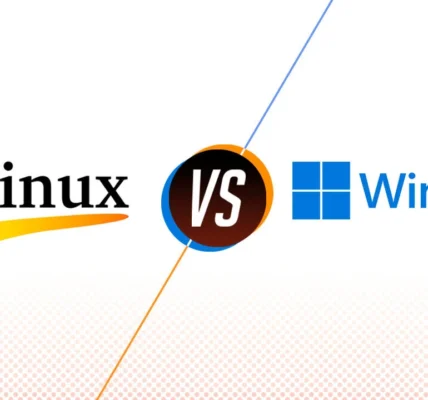How to Optimize Linux Performance. Linux is a powerful and versatile operating system, but even the best systems need a little tuning to perform at their peak. How to Optimize Linux Performance. Whether you’re using Linux for personal computing or running a server, optimizing its performance ensures faster and smoother operations. Here are some easy-to-follow tips to help you get the best out of your Linux system.
Keep Your System Updated
Updates are critical for maintaining speed and security. Linux distributions frequently release updates to fix bugs, patch security vulnerabilities, and improve performance.
- Run
sudo apt updateandsudo apt upgrade(for Debian-based systems like Ubuntu). - For Fedora, use
sudo dnf update. - Schedule regular updates to avoid performance lags caused by outdated software.
Remove Unnecessary Packages
Over time, unused packages can clutter your system and slow it down. Cleaning them up not only saves disk space but also improves performance.
- Use
sudo apt autoremoveto get rid of unused dependencies. - Tools like
BleachBitcan help you clean system junk efficiently. - Regularly audit installed software and remove what you no longer use.
Optimize Swappiness
Linux uses a “swappiness” value to determine how aggressively it swaps data from RAM to disk. Adjusting this value can improve performance for systems with enough RAM.
- Check current swappiness:
cat /proc/sys/vm/swappiness. - Set it to a lower value (e.g., 10):
sudo sysctl vm.swappiness=10. - Add it permanently to
/etc/sysctl.conffor consistent performance.
Use Lightweight Desktop Environments
Heavy desktop environments like GNOME or KDE can slow down older hardware. Switching to a lighter option can make a huge difference.
- Try XFCE, LXQt, or MATE for a faster experience.
- Test multiple environments to find one that balances speed and usability for you.
Monitor System Resources
Keep an eye on CPU, RAM, and disk usage to spot bottlenecks. Linux offers powerful tools to monitor system performance.
- Use
toporhtopto check resource usage in real time. - For disk I/O performance,
iotopis very useful. - Analyze logs with
journalctlto identify recurring issues.
Manage Startup Services
Too many background services at startup can slow down boot time. Disabling unnecessary services speeds things up.
- List services:
systemctl list-unit-files --type=service. - Disable unwanted services:
sudo systemctl disable <service-name>. - Be cautious and research services before disabling them.
Use a Faster File System
The file system you choose has a big impact on performance.
- EXT4 is a good all-rounder, but you might get better results with XFS or Btrfs for specific use cases.
- Use tools like
tune2fsto optimize file system parameters. - Regularly check and repair your file system using
fsck.
Optimize Disk Performance
Disk performance plays a vital role in overall system speed.
- Enable write caching with
hdparm. - Use a solid-state drive (SSD) for significant speed improvements.
- Regularly clean up old logs and temp files to free up space.
Utilize Performance Profiles
Linux allows you to tweak performance settings through various tools and profiles.
- Use
TLPorPowertopto manage power and performance settings. - Adjust CPU governor to performance mode:
sudo cpufreq-set -g performance. - On laptops, balance performance and battery life with these tools.
Reduce Kernel Modules
Unnecessary kernel modules consume resources. Removing unused ones can boost speed.
- List all modules with
lsmod. - Remove unwanted ones using
modprobe -r <module-name>. - Be cautious not to disable essential hardware-related modules.
How to Optimize Linux Performance
ZRAM uses RAM as a compressed block device to reduce swap usage and improve performance.
- Install ZRAM tools with your package manager.
- Configure ZRAM size based on your system’s RAM.
- Enjoy faster system response with reduced reliance on disk-based swap.
Adjust I/O Scheduler
Linux allows you to change the I/O scheduler to better suit your workload.
- Check the current scheduler:
cat /sys/block/<disk>/queue/scheduler. - Change it to
deadlineornoopfor SSDs:echo noop | sudo tee /sys/block/<disk>/queue/scheduler. - Test different schedulers to find the best fit for your system.
Use a Performance Kernel
Some Linux distributions offer kernels optimized for performance.
- Look for kernels like Liquorix or Zen Kernel.
- Install them using your distribution’s package manager.
- Keep backups before switching kernels in case you need to revert.
Schedule Regular Maintenance
Just like any system, Linux benefits from regular maintenance.
- Clear the package cache:
sudo apt clean. - Remove orphaned packages using
deborphan. - Schedule weekly cleanups to ensure smooth operation.
Leverage Virtual Memory
Adjusting virtual memory settings can improve performance in memory-intensive tasks.
- Increase the file descriptor limit in
/etc/security/limits.conf. - Use tools like
ulimitto manage resource limits for specific processes. - Experiment with different configurations to suit your needs.
Keep It Simple
While Linux offers endless customization, sometimes less is more.
- Avoid installing unnecessary software that bloats the system.
- Stick to lightweight applications that align with your hardware capabilities.
- Focus on stability as well as speed to avoid frequent crashes.
Backup Regularly
Lastly, always have a backup plan. Optimizations can sometimes go wrong, and having a reliable backup saves time and effort.
- Use tools like
rsyncorTimeshiftfor regular backups. - Store backups on external drives or cloud storage for added security.
- Test your backups to ensure they work when needed.
Optimizing Linux performance doesn’t have to be complicated. By implementing these simple steps, you can enjoy a faster, smoother computing experience. Give it a try, and let your Linux system shine!




